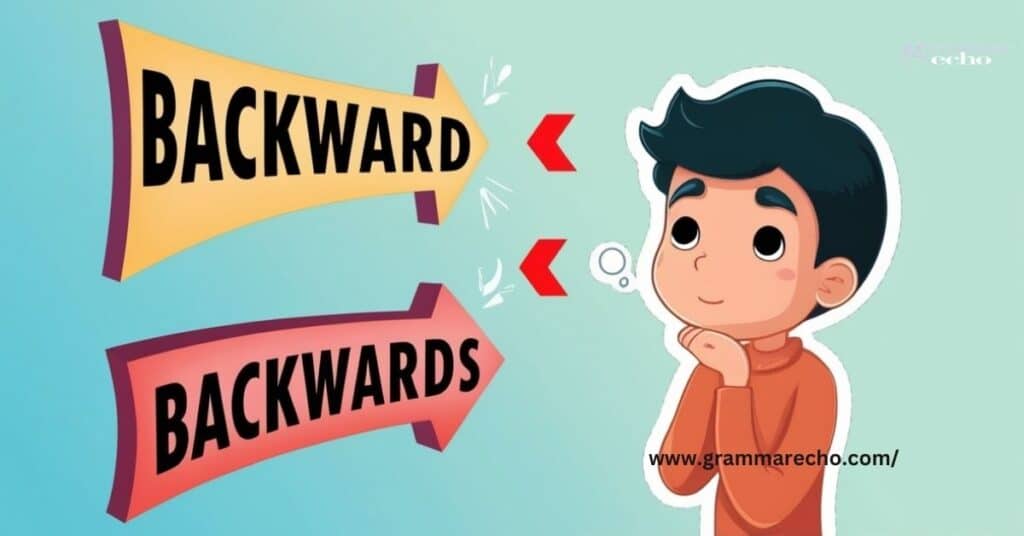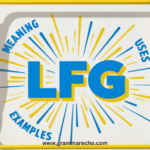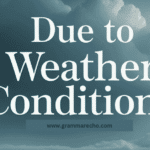When navigating the complexities of the English language, one common question arises: Backward and Backwards Many people find themselves puzzled by these two similar terms. While they both describe a direction opposite to forward, understanding their specific uses can enhance your communication skills.
This article will clarify the differences between “backward” and “backwards,” exploring their meanings, grammatical roles, and regional preferences. By delving into examples and usage contexts, you’ll gain the confidence to use these words correctly in your writing and speech. Let’s unravel the confusion and discover the nuances of these often-interchanged terms!
Why is There Confusion?
The confusion between “backward” and “backwards” often arises from their similar meanings and interchangeable use in casual conversation. Both words describe a direction opposite to forward, but nuances in their usage exist. Understanding these differences can help you avoid common pitfalls when communicating.
What Does the Word “Backward” Mean?
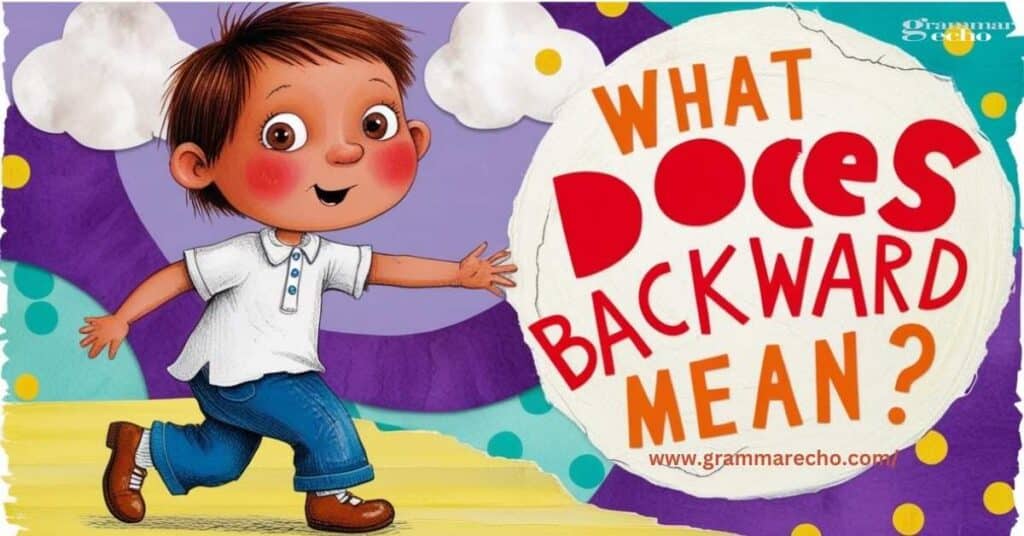
“Backward” is primarily used as an adjective. It describes something that is oriented to the rear or is moving in a direction that is opposite to forward. For example, you might say, “The child took a backward step,” indicating a step taken in the reverse direction.
Examples of “Backward” in Context
- The backward glance he cast over his shoulder revealed his hesitation.
- The backward movement of the vehicle caused a minor accident.
What Does the Word “Backwards” Mean?

On the other hand, “backwards” functions mainly as an adverb. It refers to the action of moving or looking in a direction opposite to forward.
Examples of “Backwards” in Context
- The dancer performed a backwards flip that amazed the audience.
- He walked backwards down the hill to avoid tripping.
This is also on our list of: Compare vs Contrast: Definitions, Differences, and Examples
“Backward” vs “Backwards”: The Differences
Part of Speech
- Backward: Adjective (e.g., “a backward glance”)
- Backwards: Adverb (e.g., “walked backwards”)
Regional Preferences
In American English, both terms are generally accepted, but “backward” is often favored in formal writing. In British English, “backward” is more commonly used, especially in informal contexts. This distinction reflects broader grammar rules and preferences in language usage across regions.
Usage Context
Understanding the context is critical for choosing between “backward” and “backwards.” For instance, in a backward movement scenario, you might say, “The team took a backward step in their strategy,” emphasizing a return to a previous state.
Which One Should You Use: “Backward” or “Backwards”?

Choosing between “backward” and “backwards” often boils down to the context of your sentence. When describing a noun, use “backward.” For actions, “backwards” is typically the way to go. This distinction helps clarify meaning and improves sentence structure.
Examples in Context
Here’s a table summarizing the correct usage of each term:
| Sentence Example | Correct Term | Reason |
| The car moved __ down the street. | backward | Describing the car’s position. |
| She danced __ at the talent show. | backwards | Describing the manner of dancing. |
Synonyms and Similar Terms to “Backward” and “Backwards”
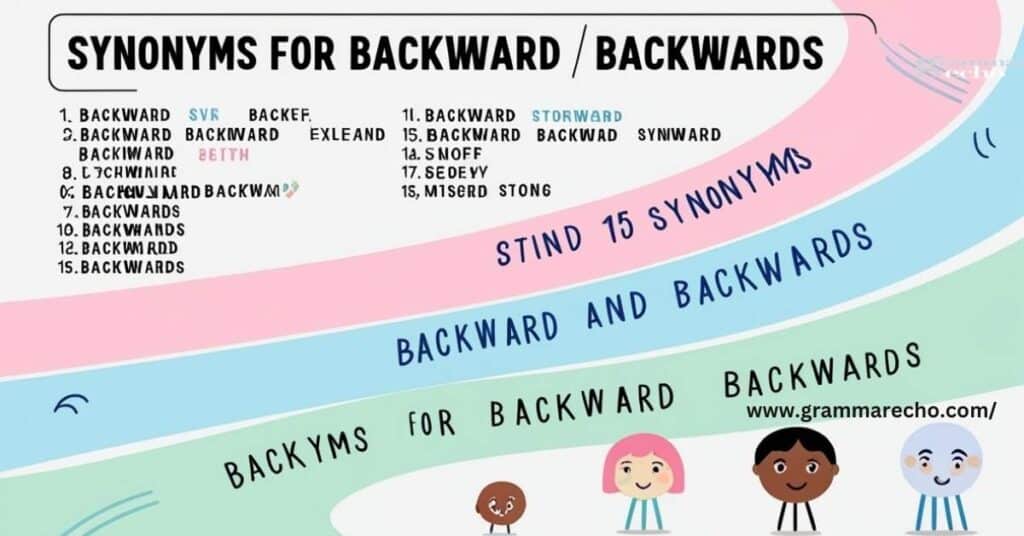
- Rearward: Often used interchangeably, this term emphasizes a direction toward the rear.
- Example: “The vehicle shifted rearward quickly.”
- Reverse: Indicates a movement in the opposite direction.
- Example: “He had to reverse his decision.”
- Reversed: Describes something that has been turned or moved back.
- Example: “The order was reversed to accommodate the schedule.”
More Specific Alternatives
- Retrograde: Refers to something that moves in reverse or backward in progress.
- Example: “The retrograde motion of the planets fascinates astronomers.”
- Retreating: Signifies a backward or away movement, often used in military or strategic contexts.
- Example: “The retreating movement of the troops was strategic.”
Usage Context for Synonyms
When discussing actions or states that imply a backward movement, consider the nuances of these synonyms. For instance, “retrograde progress” can imply a decline or regression, while “retreating movement” often suggests a tactical withdrawal.
This is also on our list of: Analogy vs Simile: Don’t Be Confused by These Comparisons
Origins of “Backward” and “Backwards”
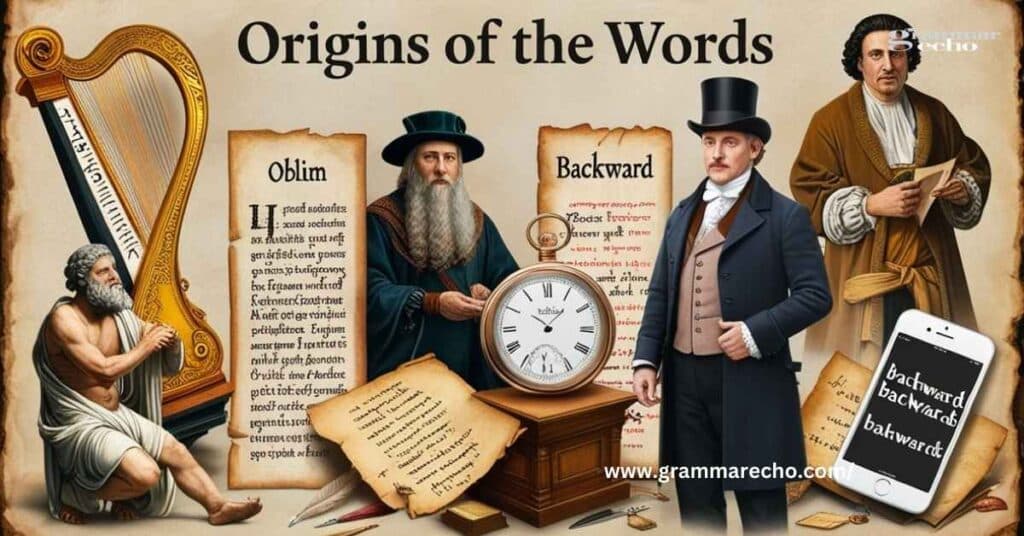
Origins of “Backward”
The term “backward” dates back to Middle English, originating from the Old English “bæcweard,” which combines “bæc” (back) with “weard” (ward or direction). This etymology emphasizes the directional aspect of the word, solidifying its use as an adjective.
Origins of “Backwards”
“Backwards” also stems from Old English, with similar roots. The addition of the suffix “-s” in British English gives it an adverbial form, enhancing its usability in informal speech. This evolution showcases the adaptability of language over time.
Final Words
In summary, understanding the difference between Backward and Backwards is essential for clear communication. Remember, “backward” functions as an adjective, while “backward” serves as an adverb. By using them correctly, you’ll enhance your writing and reduce confusion.
FAQs
Not typically. “Backward” is an adjective, while “backwards” is an adverb.
“Backward” is often preferred in British English, especially in informal contexts.
Yes, terms like “rearward” and “reverse” can be used as synonyms.

Lily Suzi is an experienced blogger and the voice behind Grammar Echo. With a passion for language and a knack for storytelling, she explores the nuances of grammar and writing in a relatable way. Her insights not only educate but also inspire readers to appreciate the beauty of clear communication.

